Caesars Entertainment's Environmental Stewardship Sparkles


Caesars Entertainment touts its commitment to environmental stewardship, but the company’s latest Corporate Citizenship Report demonstrates that it is more than just a mere boast.
The company achieved a 12.6 percent reduction in greenhouse gas (GHG) emissions in 2013, surpassing its goal of a 10 percent reduction. Caesars surpassed other goals including its goal for water reduction. The hotel chain reduced water use by 18 percent per air conditioned 1,000 square feet in 2013. The goal was to reduce water use by 10 percent by 2015 and 15 percent by 2020.
Environmental stewardship is a long-term strategy Caesars developed about six years ago, Gwen Migita, vice president of corporate citizenship and sustainability, told me. The company is currently in the next stage of its five-year strategy. “Environmental stewardship was a long-term strategy we really developed about six years ago,” Migita said. “From the top down, our CEO has made a commitment to sponsor and support our sustainability strategy."
Caesars diverted 35 percent of its waste from landfill in 2013, beating its goal of a 25 percent diversion by 2014. That puts it well on its way to meeting a 50 percent target by 2020. At Las Vegas properties it has already achieved "around a 50 percent" waste diversion rate, Migata said. "Six-seven years ago some of those properties may have been in a single digits. So, it's been a pretty staggering shift in terms of waste diversion,” Migita said.
Reducing greenhouse gas emissions through energy efficiency investments
In 2013, Caesars was the only entertainment-gaming company to win the Climate Leadership Award for excellence in greenhouse gas management. Migita told me that it largely achieved its GHG reductions through energy efficiency investments. The company has invested $70 million in over 180 major energy efficiency initiatives during the last decade. The investments include lighting retrofits, energy efficient HVAC installations, guest-room thermostat controls and installing improved insulation.
"We've moved into a more systemic way of retro-commissioning, so that we've taken that play book and expanded it to other properties,” Migita said. “We have a number of aging properties in the Midwest. We look at ways to run our buildings more efficiently and working on how we use different technologies and sensors. We continue to escalate our investments (in energy efficiency)."
Purchasing sustainable seafood
Caesars procures more than $185,000 worth of fish and seafood on average every day for its properties and restaurants around the U.S. In order to make fish and seafood supply chain more sustainable, it surveyed 20 top suppliers of 30 fish and seafood species, and 15 responded by describing their sourcing methods and fishery practices. Using that information, Caesars created standards for sustainable fish sourcing and identified a number of fish species it can source sustainably. The company promotes sustainable fish options on its menus in some restaurants and certain conventions and events.
Sustainable seafood is a “big issue globally,” Migita explained. Caesars felt it was an area where it could “help to influence broader industry and upstream impact as well.” In order for it standards regarding seafood to be implemented, the company had to engage the people who prepare the food at its properties. “We have about a 1,000 chefs and sous chefs in our system,” Migita told me. “The biggest opportunity for us is how do you educate and influence your decision making points or change the way they select seafood.”
Image credit: Wally Gobetz
Unilever far from bog standard over toilet provision pledge


Anglo-Dutch conglomerate Unilever has pledged to to help 25m people gain improved access to toilets by 2020.
This commitment is part of the Unilever Sustainable Living Plan – Unilever’s blueprint for sustainable growth.
According to the company, an estimated 2.5bn people – over one third of the world’s population – live without access to adequate sanitation. Of these, over one billion continue to defecate in the open. This has a serious impact on people’s health, nutrition, education, on gender equality and sustainable economic development.
“Business can and must be part of the solution in addressing global challenges that affect us all,” said Unilever ceo, Paul Polman. “That’s why we introduced the Unilever Sustainable Living Plan to positively contribute to the societies where we operate. With our portfolio of health and hygiene brands, our understanding of consumers’ needs and our global reach, we are uniquely placed to help improve people’s lives.”
This target will be delivered by Unilever’s toilet cleaning brand, Domestos and the Unilever Foundation, by scaling up existing partnership programmes.
To deliver this commitment, Domestos and the Unilever Foundation are working with UNICEF to change sanitation behaviours.
Domestos is also partnering with social enterprise eKutir, to deliver market-based models that enable entrepreneurs to set up local sanitation businesses in rural areas, and running school programmes with locally-based NGOs, which improve school facilities and educate the next generation of children on the importance of sanitation and hygiene.
Picture credit: © Nomadsoul1 | Dreamstime.com - Toilet Bowl Photo
3p Weekend: Top 10 Sustainable U.S. Breweries
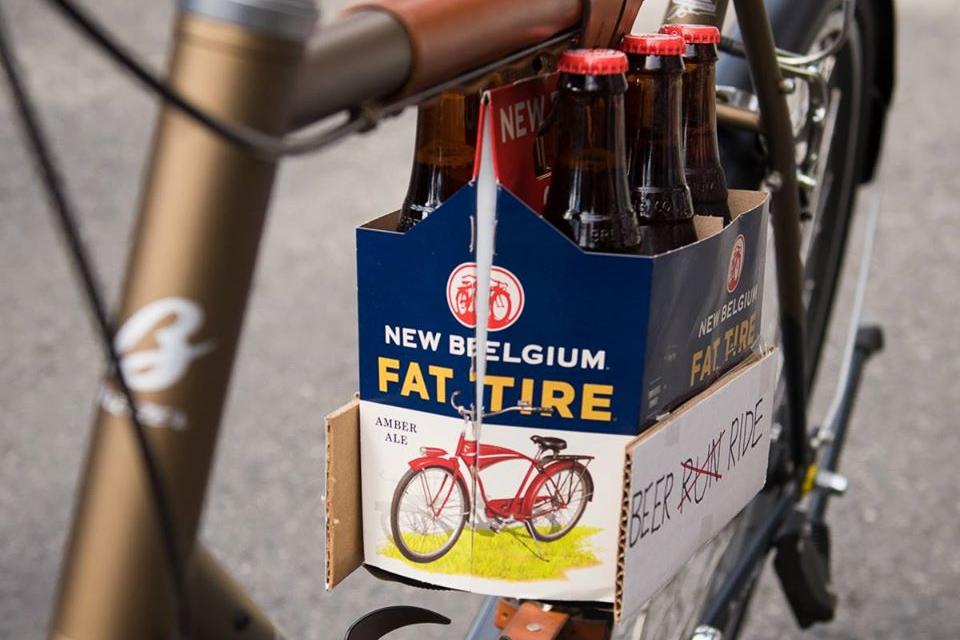
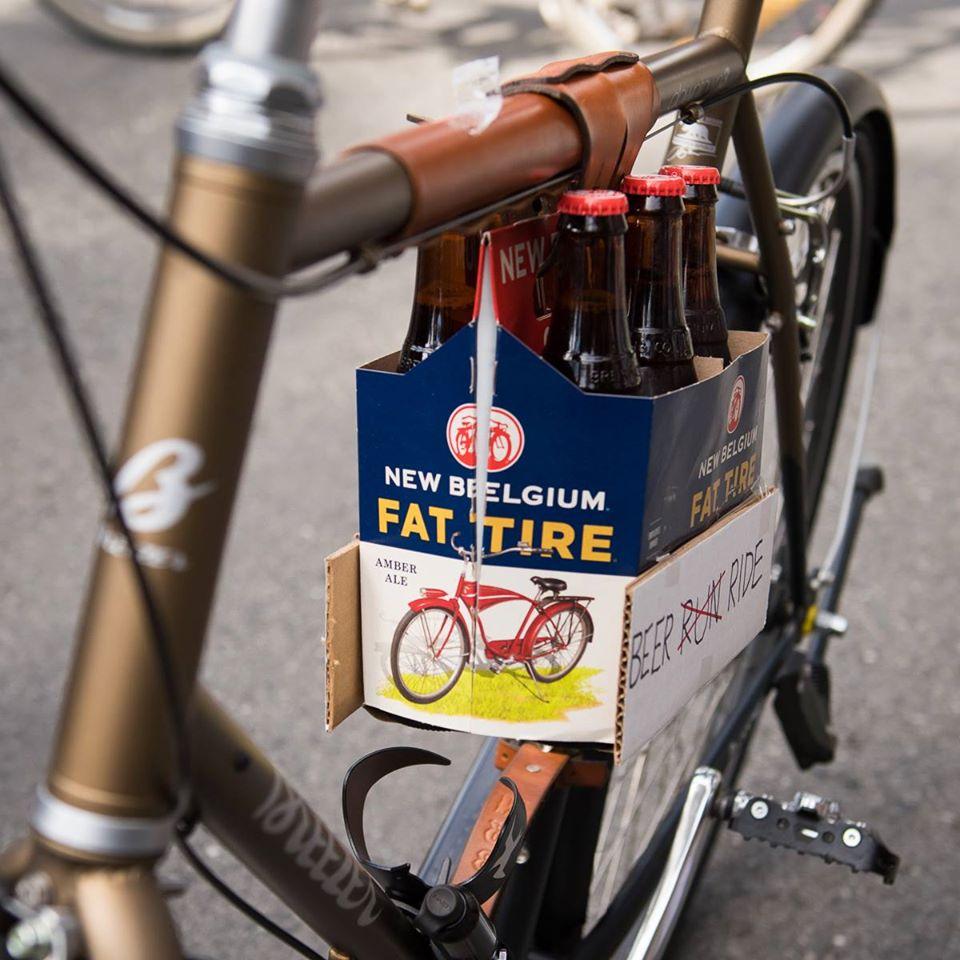
Love sustainable beer? Join Triple Pundit as we take our 'Stories & Beer' series on the road! It all starts in Philadelphia on Sept. 30, where we'll discuss the B Corp movement and "measuring positive impact." Then, it's on to New York City on Oct. 2 for a chat about sustainable fashion and water conservation. We'll wrap things up with a happy hour event at SXSW Eco in Austin on Oct. 7. Hope to see you there!
With a busy week behind you and the weekend within reach, there’s no shame in taking things a bit easy on Friday afternoon. With this in mind, every Friday TriplePundit will give you a fun, easy read on a topic you care about. So, take a break from those endless email threads, and spend five minutes catching up on the latest trends in sustainability and business.
It's Friday afternoon, and you're bound to be feeling a little thirsty. To help you choose a sustainable sip for tonight's happy hour, this week we're rounding up 10 of the most sustainable breweries in the U.S. So, grab a cold one, and rest easy knowing it had little to no impact on our planet.
1. New Belgium Brewing
New Belgium is widely regarded as one of the most sustainable breweries in the nation. Taking a holistic approach to sustainability, the Fort Collins, Colorado-based brewery uses science-based metrics to track environmental performance.
New Belgium is currently diverting 99.9 percent of its waste from landfills and has reduced water use per barrel of beer to 3.5:1 (averages range from 6:1 to 10:1). The company is also a partner in the Brewers for Clean Water campaign and has donated close to half a million dollars to restore local waterways. The brewery also takes a "high-involvement" approach when it comes to its community, hosting events and give-back initiatives to help support the people that love its beer. The fact that it's 100 percent employee-owned doesn't hurt either.
2. Yards Brewing Co.
This Philadelphia favorite has thought of everything when it comes to sustainability: It is Pennsylvania's first 100 percent wind-powered brewery; its cardboard packaging is certified by the Sustainable Forestry Initiative; it sends its spent grain to farmers to use as livestock feed; and it collects and reuses about 2 million gallons of water in the brewery each year.
In its tasting room, Yards composts all food scraps and uses recycled materials wherever possible (the bar top, for example, was made from recycled bowling lanes). The company also sponsors an event on Earth Day each year to raise awareness of the declining honeybee population. We'll toast to that!
3. Brooklyn Brewery
Brooklyn Brewery was the first New York City company to use 100 percent wind-generated electricity. It also recycles all paper, plastic and bottles from the brewery and sends spent grain to local farms to be used as animal feed.
The company also recycles its hot water and serves samples out of compostable cups at its tasting room in Williamsburg. For more on sustainability at Brooklyn Brewery, check out our exclusive video interview with COO Eric Ottaway.
4. Sierra Nevada Brewing Co.
During its growth from craft to mainstream, Sierra Nevada kept sustainability front and center. Back in 2013, the company revealed it saved more than $5 million by diverting nearly 100 percent of its waste.
Its brewery in Chico, California also houses one of the largest privately-owned solar arrays in the country. More than 10,000 panels produce 2 megawatts of power -- enough to meet 20 percent of the brewery's energy needs. The brewery sources another 20 percent of its power from on-site hydrogen fuel cells. It also captures CO2 released during fermentation and recycles it back into the brewery, as well as sending spent grain to local farms.
5. Full Sail Brewing
Full Sail Brewing had sustainability in mind from the start: When it began making beer back in 1987, its brewhouses were housed in old buildings that had fallen into disuse, with the idea to repurpose them rather than tearing them down.
Located along the Columbia River in scenic Hood River, Oregon, it's no wonder Full Sail was so focused on sustainability -- and the brewery kept it going for more than 20 years. While average breweries consume 6 to 8 gallons of water per gallon of beer produced, Full Sail reduced its consumption to 2.5 gallons. The brewery is also modified for efficiency to cut energy use, and it sends surplus grains to local farms rather than tossing them in the landfill. For more information on sustainability at Full Sail, check out the video below.
6. Lakefront Brewery
Based in the proud beer town of Milwaukee, Lakefront Brewery was the first in the U.S. to produce a certified organic beer. It also sends its spent mash to Growing Power, where it's composted and turned into organic fertilizer. Lakefront also reclaims heat energy from the brewing process to reuse for the next batch of beer, along with a number of other sustainability initiatives.
7. Brewery Vivant
Based in Grand Rapids, Michigan, Brewery Vivant was the first LEED-certified microbrewery in the U.S. It has also issued sustainability reports each year since its founding and packages its brews in cans made from recycled aluminum.
With a focus on locally-sourced ingredients, 75 percent of Vivant's purchases are from Michigan, with 90 percent coming from within 250 miles of the brewery. The company also donated 11 percent of its profits to charitable causes last year, and pays all workers a living wage.
8. Alaskan Brewing Co.
Sustainability can be a big challenge in the frigid environment of Juneau, Alaska, but Alaskan Brewing Co. makes it work. In 1998, it became the first craft brewery in the U.S. to install and operate a CO2 reclamation system. The system captures and cleans carbon dioxide (a natural byproduct of the brewing process) and uses it to package the beer and purge oxygen from holding tanks -- saving money and preventing more than 1 million pounds of CO2 from entering the atmosphere each year.
As you may have noticed from this list, many breweries recycle their grains through local farms. But with no livestock in Juneau, Alaskan Brewing had to devise another solution. The company has been drying and shipping its grain to farmers in the Pacific Northwest for 20 years, but it took things a step further in 2012 by developing a first-of-its-kind steam boiler fueled entirely by spent grain. With the new system, the brewery expects to reduce overall oil use by more than 65 percent.
9. Bison Organic Beers
“By choosing a six-pack of organic beer a week, you will convert about 1,700 to 1,800 square feet from conventional to organic agriculture,” brewmaster Dan Del Grande of Bison Organic Beers told Triple Pundit in 2012.
If that's not enough reason to have a sip, the Berkeley, California-based brewery also committed to responsibly sourced packaging and 100 percent non-GMO ingredients.
10. Great Lakes Brewing Co.
Based in Cleveland, Ohio, Great Lakes Brewing Co. focuses on sustainable sourcing and innovation. At its Pint Size Farm in Bath, Ohio, the company organically farms 16,000 square feet of vegetables, herbs and flowers for use in its brewpub. What it can't produce on the farm comes from local, environmentally responsible farmers and vendors.
Great Lakes also sends spent grain back to farmers for use as livestock feed; some is also recovered to produce the cracked barley beer bread and pretzels served at its brewpub. The brewpub also features 12 solar thermal panels and an energy-efficient boiler that heats water for brewing and restaurant use.
Image credit: New Belgium Brewing via Facebook
Based in Philadelphia, Mary Mazzoni is a senior editor at TriplePundit. She is also a freelance journalist who frequently writes about sustainability, corporate social responsibility and clean tech. Her work has appeared in the Philadelphia Daily News, the Huffington Post, Sustainable Brands, Earth911 and the Daily Meal. You can follow her on Twitter @mary_mazzoni.
SolarCity to Build PV 'Gigafactory' in Buffalo


Perhaps no two companies have made a bigger splash -- or more clearly demonstrated the potential of clean technology to revitalize manufacturing, create jobs and spur “green” growth of the U.S. economy -- than Elon Musk's Tesla Motors and SolarCity.
Hot on the heels of Tesla announcing it will build its lithium-ion battery 'Gigafactory' in Nevada, New York Gov. Andrew Cuomo announced a groundbreaking ceremony for an equally massive SolarCity facility in Buffalo. The manufacturing plant will devote 1.2 million square feet to produce solar photovoltaic (PV) cells, the governor announced Sept. 23.
"Gov. Cuomo shares our view that the United States can return to its place atop the world in advanced technology manufacturing,” SolarCity CEO Lyndon Rive was quoted in a press release. “Thanks to the governor’s leadership, we will be able to quintuple the output capacity and economic impact of Silevo’s original commitment. I couldn’t be more excited to partner with the state to make Western New York a global capital for clean energy development."
Vertical integration; supply chain diversification
SolarCity announced it would acquire Silveo, a manufacturer of high-performance solar PV cells and modules, this past June. The acquisition was viewed as a means for SolarCity to integrate vertically by expanding upstream into solar PV manufacturing.
Though Silveo calls Fremont, California home, its manufacturing operations are located in Hangzhou, China. Nonetheless, the acquisition was also seen as way for SolarCity to diversify sourcing of the solar panels used in its main line of business – third-party leasing and installation of residential PV systems.
SolarCity sources most of its PV panels from Chinese manufacturers, such as Trina and Yingli Solar, whose panels have become more expensive in the U.S. following successive import duties and tariffs imposed by U.S. government authorities for violation of international fair trade rules.
SolarCity's PV 'Gigafactory' in Buffalo
SolarCity said it will invest $5 billion to build the solar PV manufacturing facility in Buffalo. New York has pledged $759 million to support the project, much of which is expected to take the form of cheap electrical power from Niagara Falls, the Times-Union reported.
Expected to come online and begin manufacturing in high volume as early as the first quarter of 2016, SolarCity's investment in the Buffalo plant is projected to create more than 1,450 direct manufacturing jobs. Another 2,000 workers will provide solar services over the next five years, according to the news release from Gov. Cuomo's office.
“We said four years ago that we have to change the mentality of Buffalo, and every day since we have been working hard to continue this new energy and momentum in Western New York. Less than a year after announcing our original plan, one of the leading solar companies in the world is coming on board and making this the largest advancement for Buffalo's economy in a generation,” Gov. Cuomo proclaimed.
“This is bigger than anything we could have imagined. It is the perfect metaphor for Buffalo, where the fundamental strength was the available hydropower. That hydropower now, that renewable energy now, will fuel the renewable energy industry for the future. I am incredibly proud that the state is playing a role in this project, because Buffalo’s future is New York’s future, and today that future is brighter than ever.”
*Image credits: 1) SolarCity; 2) Niagara Falls State Park
What the Environmental Movement Can Learn From Marriage Equality
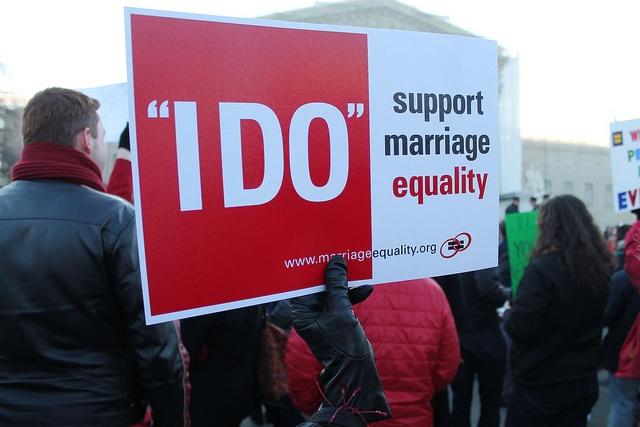

By Jessalyn Kiesa
As global leaders join forces at the United Nations Climate Summit this week and grassroots organizers celebrate the success of last weekend’s climate march — the largest in history, with over 300,000 participants — there’s a sense that the environmental movement and its advocates face a new set of opportunities. With the next big round of international climate talks scheduled for December 2015, the moment to change public opinion and drive global legislative change is now.
But how do we get and keep supporters engaged? The answer might come from one of the defining social justice movements of our time. Given its success and continued momentum, we can learn a lot from the movement for marriage equality.
It seems like a distant memory now, but it was just a decade ago that conservative lawmakers -- concerned in part about growing support for Massachusetts’ new marriage measure -- responded by introducing anti-gay marriage initiatives on ballots. By 2004, 16 states had approved constitutional amendments banning marriage equality, and it appeared, at least from the outside, that the movement had lost a good deal of momentum.
But by evolving its messaging and harnessing changing demographics and emerging technologies, the marriage equality movement has experienced a stunning turnaround. Today, across 19 states and the District of Columbia, thousands of same-sex couples have secured legal recognition of their love and commitment. The United States Supreme Court could end marriage discrimination at the federal level as early as next year.
Over the past five years, we’ve worked alongside Freedom to Marry to win marriage in more states, grow public support and create the climate necessary for the Supreme Court to bring the issue to national resolution. And in the process, we’ve learned what it takes to successfully build, activate and scale a movement.
These lessons extend far beyond the realm of equal rights, and there are a lot of parallels to be drawn: The stakes are high, the challenges global, and the conversation very public. The environmental issues we face require action on a grand scale, and true change means building and mobilizing a strong community of advocates. Nowhere is this more achievable than online.
Now is the time, environmental organizations. Here are three recommendations we hope you will take to heart to be riding a similar wave this time next year.
1. Make it personal
Just as the freedom to marry movement shifted the narrative to focus on love, the environmental movement needs to create an emotional message. Climate change is deeply personal: It impacts our health, our communities, our livelihoods and our futures. Freedom to Marry grew public support by elevating personal stories that connect with supporters on a emotional level. They put faces to the issue, moving it out of the courts and into the heart.
Similarly, by demonstrating how environmental issues specifically impact people — not just the planet, not just adorable polar bears, but also the people of this planet — it will become easier for supporters to connect, and ultimately act. A challenge for the environmental movement is the perception of “other” — that threats are far away in space or time and impact communities different than our own. The truth is, climate change is happening in all of our backyards.
Al Gore and the Climate Reality Project recently launched “Why? Why Not?” (which we worked on with other WPP agencies) to invite young adults from around the world to ask important questions to leaders via video.
The creators of the six best submissions were flown to New York to attend the U.N. Climate Summit on Sept. 23. The goal is to put pressure on world leaders to commit to meaningful carbon emission reductions, but it also works to put a face to the issue; to elevate the stories of real people, like Dominic from the Philippines, whose daily existence is challenged by the impacts of climate change. The campaign makes the issue personal.
2. Offer tools for action
Passionate supporters are your best advocates, and giving them the tools to recruit friends and call on lawmakers can pay big dividends. Freedom to Marry leveraged their ranks of supporters by empowering them with decentralized digital tools, like one to recruit their local mayor to join a coalition of nonpartisan mayors for marriage.
Within the often fragmented environmental movement, knowing which actions to take can feel overwhelming. Supporters become impassioned through an experience, an article or amazing film, but then disengage because they don’t know what actions to take to follow through. Like political campaigns and big brands, the environmental movement needs to adopt more sophisticated digital tools to segment their audience and deliver more personalized, action-oriented campaigns that match people’s passions and their geographic locations.
We need to blend dynamics of grassroots organizing with sophisticated digital tools to drive real world results. Organizations can reach people in the right ways by leveraging the power of big data and crafting personalized opportunities that feel tailor-made.
3. Give them hope
It was Harvey Milk who taught us, “You gotta give them hope.” Over the past four years, Freedom to Marry has helped reshape the national conversation on marriage around a narrative focused on hope, progress and a practical roadmap to victory — and it’s resonated.
This is arguably the most critical lesson the environmental movement can learn from the fight for marriage equality: People want solutions, not apocalyptic messaging. Those who join environmental campaigns to fight for sustainability want to know that their support is helping to make an impact -- and that change is achievable. This isn’t to say that the gravity and urgency of the environmental challenges we face today should be ignored, but we need to focus more on hope, possibility and solutions for a better world.
We recently had the pleasure to partner with 100 Resilient Cities, a new nonprofit pioneered by the Rockefeller Foundation, to create a digital platform that showcases emergent solutions around urban resilience. The reality that 75 percent of the world’s population is expected to live in cities by 2050 poses some daunting challenges, but 100RC demonstrates the power of integrated resiliency efforts to create change. It connects cities facing similar challenges, elevates shared learnings, and offers hope for a better, more resilient future.
There’s no question that the environmental movement is the moral imperative our time; the future of humanity depends on its ability to succeed. The question is: Can the environmental movement adopt new principles to build and sustain an army of advocates? Can environmental issues become deeply personal ones? Can sophisticated digital tools change public policy? Can resiliency drive hope? The answers to these questions may be the turning point for action and ultimately real change.
Image credit: Flickr/perspective
Jessalyn Kiesa is a senior account director at Blue State Digital, which works with some of the world’s leading nonprofits, advocacy groups, and brands to mobilize their communities to take action.
Southwest to Fly with Forest Waste Biofuel


As early as 2016, biofuel made from forest waste might propel passengers on some Southwest Airlines flights.
The airline’s recent agreement with Colorado’s Red Rock Biofuels will have a double benefit: The low-carbon renewable jet fuel — made using forest residues or remnants — will help reduce the risk of destructive wildfires in the Western United States.
The agreement with Red Rock covers the purchase of about 3 million gallons annually. It is expected that the renewable fuel will be incorporated as a blend with conventional jet fuel in Southwest airplanes originating from San Francisco airports starting in 2016.
"Our commitment to sustainability and efficient operations led us on a search for a viable biofuel that uses a sustainable feedstock with a high rate of success," said Bill Tiffany, vice president of supply chain at Southwest Airlines. Red Rock’s technology, economics and approved use of the forest remnants material “made entering into an agreement for purchase a win-win situation,” he said in a press release.
Red Rock’s first plant will convert approximately 140,000 dry tons of woody biomass feedstock into at least 12 million gallons of renewable jet, diesel and naphtha fuels each year. It says its process technology platform -- based on gasification, Fischer-Tropsch conversion and product upgrading -- is “unique in its ability to produce renewable, ASTM-specification jet and diesel fuels at cost parity with conventional fuels.”
Terry Kulesa, Red Rock’s CEO said, “A conversation we started with Southwest on the premise of providing renewable jet fuel at cost parity with conventional jet fuel has evolved into a great partnership. We're happy to help Southwest diversify its fuel supply.”
Southwest is a longtime member of Commercial Aviation Alternative Fuels Initiative (CAAFI), a government and industry coalition for the development and deployment of alternative jet fuel for commercial aviation. As a member of CAAFI, Southwest said it has followed the progress of alternative fuel technologies. “Red Rock Biofuels is the first viable opportunity the airline has found to meet its financial and sustainability objectives,” Southwest added.
Last year, the airline bought 1.8 billion gallons of fuel, meaning that the 3 million gallons the airline will purchase from Red Rock is a small drop in a very large bucket -- representing about 0.20 percent of that total. Three million gallons isn’t even enough to meet Southwest’s fuel needs for one day.
The Dallas Morning News reported, however, that the relatively small amount of biofuel produced will cover a “noticeable portion” of fuel used for Southwest flights at airports in San Francisco, Oakland and San Jose.
Oh well, it’s a decent start at diversification and good PR for the airline’s new heart logo in any case.
Image: Southwest Heart One photo credit by Stephen M. Keller from Southwest media
In Wake of New Protests, H&M and Others Commit to Living Wages in Cambodia


A group of eight international fashion retailers, including H&M, Inditex (the owner of Zara) and Britain’s Primark, announced last week that they would support fair living wages for Cambodian garment workers and were prepared to factor such wages into their pricing. The official support came just days after the Cambodian government, for the second time this year, deployed armed troops in response to rallies by garment workers seeking higher minimum wages.
On Sept. 17, thousands of textile workers gathered in and around Cambodia’s capital, Phnom Penh, demanding a significant increase in the monthly minimum wage, from $100 to $177. A previous demand for a wage hike to $160 had been rejected by employers, who earlier this year raised wages to $100 from around $80. Importantly, no incidents of violence against either police or protesters were reported, in contrast to the government’s response to a January 2014 protest, when Cambodian troops opened fire on striking workers -- killing at least four and injuring many more.
The retailers’ commitment
H&M and the other retailers made their support for the garment workers known in a letter to the deputy prime minister and the chairman of the local Garment Manufacturers Association, written just one day after the latest protests. The letter states that “[w]orkers in all production countries have a right to a fair living wage.” As such, going forward the retailers’ “purchasing practices will enable the payment of a fair living wage and increased wages will be reflected in our prices.” The retailers also wrote that they expect and will support “the installation of an annual industry collective bargaining process for wages that is fair and takes into account the [International Labor Organization’s] technical expertise.”
(The letter goes on to note, however, that the retailers anticipate that the higher cost of wages will be offset by remedying perceived inefficiencies in Cambodian factories. The letter is also light on specifics and does not explicitly endorse the workers’ demand for $177/month or any other particular figure.)
The evolution of Cambodia’s garment industry
Cambodia’s garment industry has exploded in recent years, due in part to lower wages there as compared to those now being paid in China and Vietnam. The garment sector in Cambodia now represents roughly a third of the country’s GDP and employs more than 600,000 people. Despite the rapidity of its recent growth, Cambodia’s role as a major supplier for the industry can be traced back to the mid-1990s, when the country became a market economy and enacted laws that incentivized investment in the garment industry.
In 1999, after the industry’s significant development led to concerns about working conditions, the U.S. and Cambodia entered into a bilateral textile trade agreement (BTTA), which pegged U.S. import quotas to certain improvements in Cambodian factories. This, along with the International Labor Organization’s (ILO) creation of Better Factories Cambodia to monitor compliance with the BTTA, encouraged the Cambodian government to strengthen working conditions in the sector.
For the majority of the last decade, the strictures of complying with BTTA and ILO monitoring led to a marked improvement in human rights in the industry. Yet, that progress has since been reversed. In 2013, the Wall Street Journal claimed that, despite a legacy of strict factory monitoring and strong worker protections, a string of recent accidents at Cambodian factories suggested that the country had “fall[en] short as a garment-industry model.” According to the Cambodian Center for Human Rights, in addition to paying scant wages, “factories are [now] reported as regularly disregarding fire safety mechanisms and other health and safety standards, and employing child labor.”
Other culprits and the garment industry’s future
The support of the group of eight retailers is, of course, welcome and timely. Although garment workers in Cambodia have seen (comparatively) significant wage increases in the last year or so, wages had dropped nearly 20 percent in the 10 years prior. The fact that major international purchasers are now publicly throwing their support behind the workers could give unions additional leverage when government officials and union representatives meet in October to discuss wages for the sector.
Not to discount the role of Cambodia’s government, but it bears mentioning that unsafe working conditions and paltry wages are partly the result of retailers’ efforts to satiate consumers’ apparent desire for cheap clothing. This demand -- real or otherwise -- for lower prices has largely been successful. In a time when the cost of all consumer goods has increased substantially (64 percent over the last decade), the price of clothing has actually fallen (by 3.3 percent over the same period). Yet, retailers’ willingness to pay more for their product (by supporting living wages for those who make it) will hardly change the cost to consumers, as factory wages account for just 1 to 3 percent of an item’s price. Moreover, consumers might even be willing to pay more for responsibly sourced clothing.
Late last year, H&M made a broader commitment: to ensure that all of its strategic suppliers are prepared to pay their employees fair living wages by 2018. In the wake of the Rana Plaza disaster last year in Bangladesh, H&M appears to be taking its commitment to social responsibility more seriously. Yet, H&M and others will need to do more than just make pledges and issue promise-laden sustainability reports. How H&M handles the situation in Cambodia should give a good indication of how serious the company is about social responsibility in its supply chain.
Notably absent as signatories to the H&M letter are the likes of Walmart, Levi’s, Gap, Puma, Adidas and Nike -- all of which are major Cambodian buyers. There’s also the matter of the United States government, which in 2012 imported $38 million in textiles and $2.6 billion in clothing from Cambodia. This, despite the fact that human rights abuses are well-documented in Cambodian factories (and the factories in other developing nations where the U.S. government does most of its procurement). In some cases, serious human rights abuses have been documented at Cambodian factories producing clothing explicitly for the U.S. government. For example, according to a report by the International Corporate Accountability Roundtable, in 2014, “close to two dozen underage workers, some as young as fifteen years old, were found working at a factory that makes clothes sold by the Army and Air Force.” Current U.S. practices are a far cry from those that led to improvements in Cambodian factories just 15 years ago.
Image (cropped): Cambodia4Kids.org via Flickr
On the Heels of U.N. Summit, Nations Announce Partnerships to End Deforestation
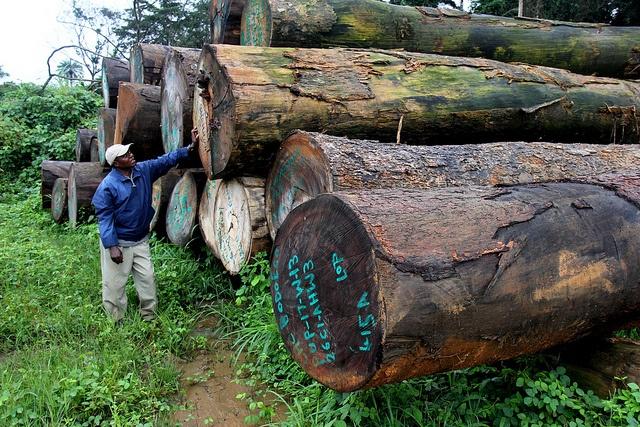

Heads of government, business leaders and activists met in New York, this week for the one-day U.N. Climate Summit. One thing is for certain: If we are to reduce greenhouse gas emissions globally, we have to stop deforestation, which is the second leading contributor of carbon emissions after burning fossil fuels.
On the same day delegates gathered at the summit, Liberia and Norway announced a partnership to protect forests in the African country. Norway will support Liberia’s efforts with up to $150 million until 2020. Announced at a joint press conference, the partnership means Liberia will become the first African nation to stop deforestation in exchange for aid from a developed country. In the first years, Norway will devote up to $70 million to implement policy measures and the necessary institution building.
The measures to be implemented in Liberia in the first phase include:
- Not issuing any new logging concessions until all concessions have been reviewed by an independent body
- Building capacity in relevant institutions and increasing efforts to enforce the law and strengthen forest governance
- Placing 30 percent or more of Liberia’s forest estate under protected area status before 2020
- Piloting direct payments to communities for protecting forest
- Addressing all key existing and potential drivers of forest related emissions
- Developing appropriate measurement and reporting systems for carbon emissions from forests
Liberia’s forests are under threat from commercial and chainsaw logging for local markets and the clearing of forests for agricultural and charcoal production. Liberia has 43 percent of the remaining Upper Guinea forests in West Africa and is home to western chimpanzees, forest elephants, rare zebra duikers, pygmy hippopotamuses and leopards. Liberia is also listed as one of 34 global biodiversity hotspots.
Norway and Germany announce partnerships with Peru to halt deforestation
On the same day, Norway and Germany announced partnerships with Peru to stop deforestation and forest degradation in the Peruvian Amazon. Peru agreed to allow stakeholders participate in carbon emissions reduction initiatives, respect the rights and proposals of indigenous communities, increase the areas titled to indigenous peoples by at least 5 million hectares, and include at least 2 million hectares in payments for conservation performance of indigenous communities. Until 2017, up to $47 million from Norway will be devoted to implementing reforms and building the institutions needed. From 2017 to 2021, Norway will contribute up to $240 million for results on reduced deforestation. Germany will continue its current support to Peru.
Peru has over 68 million hectares of forests, with one of the five largest, most diverse and best preserved tropical forests in the world. Peru’s deforestation rate is low, but it accounts for about 71 million tons of carbon emissions annually. The Peruvian Amazon is under pressure from agriculture, extractive industries and infrastructure projects. About 350,000 indigenous people live in the Peruvian Amazon and some have never established contact with the outside world.
Governments, businesses, civil society and indigenous pledge to stop deforestation
Governments, businesses, civil society and indigenous peoples endorsed the New York Declaration on Forests, which pledges to cut deforestation in half by 2020 and to end it within the next decade. The Declaration also calls for an area of forests and croplands larger than India -- over 350 million hectares -- to be restored, which would avoid between 4.5 and 8.8 billion tons of carbon dioxide every year by 2030.
Specific commitments included over 20 global food companies committing to source deforestation-free palm oil. Several European countries committed to developing new public procurement policies to sustainably source commodities like palm oil. The palm oil industry is responsible for deforestation in Indonesia and Malaysia, the top two sources of the global supply of palm oil.
Image credit: Flickr/Travis Lupick
Health is Everyone’s Business
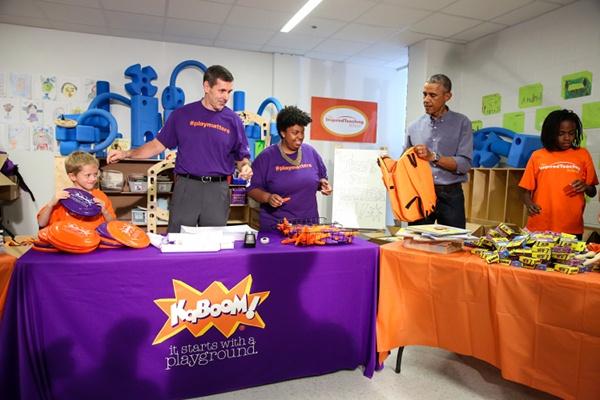

By Bruce Broussard
Americans spend in excess of $2.7 trillion on health care each year. This is roughly one of every six dollars spent in the U.S. economy. It’s estimated that approximately 20 percent of this spending is inefficient and therefore wasteful.
We’ve heard a lot recently about the challenges we face and the importance of “fixing” health care in the U.S. We recognize that people face challenges as they navigate complex and changing health care systems, and we are committed to helping our members and patients achieve better health.
As the head of one of the country’s largest health insurers, I want to share some observations about what we at Humana believe are important components to overcoming these challenges.
Quality health care starts with prevention
Humana takes a holistic approach to patient care. This means that we encourage engagement, positive behavior change, proactive clinical outreach and well-being throughout all aspects of care delivery, the patient experience, and communication between health care professionals and patients. Our primary goal is to help our members get – and stay – healthy. As the Affordable Care Act ushers in a new era of consumerism in health care, health care providers must focus individual attention on their patients, with emphasis on prevention and healthier lifestyles.
Within our plan offerings, we reward healthy behaviors through our HumanaVitality incentive program. Members earn Vitality Points for things like obtaining preventive screenings, exercising, donating blood, or quitting smoking; and the points can be redeemed for real rewards. The program works: Humana employees who participated in HumanaVitality lowered their health claims costs by 15 percent over two years, and had 17 percent fewer work absences than employees who did not participate. HumanaVitality is fully integrated into our medical plans and is also available to more than 800,000 Humana Medicare Advantage, Humana Medicare Advantage Prescription Drug Plan and Humana Medicare Supplement members.
Partnerships make a meaningful impact on health.
We all want to be healthy, but living a healthy lifestyle isn’t always easy. First and foremost, it requires knowledge of what actually constitutes a healthy lifestyle, and what we as individuals must do to maintain balance and well-being. But even when we are aware of the right choices, economic pressures, packed schedules, and the daily obstacles of life can sometimes make healthy options feel unattainable. We believe that helping communities develop and maintain healthy behaviors is key.
Many cases of heart disease, obesity and diabetes can be prevented, controlled or even reversed through behavior changes. Our Team Up 4 Health program, a pilot we launched with Microclinic International in our home state of Kentucky, operates under the simple notion that small behavior changes can add up to big improvements in health and well-being. Team Up 4 Health works to create a local system that empowers participants to influence each other and their community in adopting healthy behaviors that treat the whole person – not just chronic conditions. Team Up 4 Health’s success demonstrates that good health can be contagious.
And, because we believe that play is good for health — no matter what your age – we partnered withKaBOOM!, a nonprofit that aims to create safe and active play spaces, to build 50 multigenerational playgrounds across the U.S over the last three-plus years. These are places where children, parents, and grandparents get to have fun and get some exercise in a safe, playful environment.
Healthy people need a healthy planet
There is an intrinsic link between the health of our planet, our business and the services we provide. Climate change poses a serious challenge to our natural environment and impacts the health and well-being of our communities. Humana is an active participant inBusiness Roundtable’s Climate RESOLVE (Responsible Environmental Steps, Opportunities to Lead by Voluntary Efforts), which promotes voluntary actions to control greenhouse gas (GHG) emissions and decrease the GHG intensity of the U.S. economy.
We are also taking meaningful steps to reduce our energy use and increase operational efficiencies, assess and apply best practices across our supply chain, and engage our 54,000 associates on sustainability at work and at home. One of Humana’s goals is to reduce annual energy consumption and greenhouse gas emissions by five percent from 2013’s baseline consumption across our portfolio of owned and leased properties under vendor management. We also aim to reduce by 40 percent the amount of waste sent to landfills at sites where Humana and its vendors manage waste and recycling services.
There is much to be done, but Humana will continue to be a partner in health to the people we serve as we navigate the changes to the U.S. health care system. We view this time of change as an invitation to explore new programs that support a holistic approach to well-being and align with our sustainability strategy. As we focus in 2014 and beyond on making health easier for people, we will help the people and communities we serve have better experiences with health care while also getting healthier.
To learn more about Humana’s CSR efforts, please visit our recently released 2012-2013 CSR Report. Our CSR platform – Healthy People, Healthy Planet, Healthy Performance – enables us to live our company values as we work to inspire health, rethink routine, and thrive together.
Image credit: KaBOOM!
Bruce D. Broussard is the President and CEO of Humana Inc. Under his leadership, Humana is dedicated to improving the health of the communities it serves by making it easy for people to achieve their best health. Humana’s corporate social responsibility platform, Healthy People, Healthy Planet and Healthy Performance, aims to reinforce the company’s values: Inspire Health, Cultivate Uniqueness, Rethink Routine, Pioneer Simplicity, and Thrive Together.
Partnership aims to tackle abuse in Indian tea communities


A ground-breaking new partnership between Unicef and the Ethical Tea Partnership aims to improve opportunities for tens of thousands of children in communities growing some of the world’s favourite tea and reduce their vulnerability to trafficking and abuse.
The 3-year programme supported and funded by IDH the Sustainable Trade Initiative; ETP members, Tesco, OTG (Meßmer), Tata Global Beverages (Tetley, Tata Tea), and Taylors of Harrogate (Yorkshire Tea); and Typhoo, will initially work with 350 communities on over 100 estates in three districts in the Indian state of Assam, and has the potential to serve as a model to protect children across other rural communities.
UK supermarket giant Tesco has played a leading role in bringing together the coalition of organisations behind the programme as part of its ongoing commitment to improve conditions across its supply chains. Tesco is the first international retailer to partner with ETP.
The partnership is the first of its kind to bring together all key stakeholders in the tea industry - public and private organisations and the supply chain – to tackle the problem of child exploitation across the sector.
Sarah Roberts, executive director of the ETP, said: “We want to create a thriving future for everyone involved in tea by tackling the root causes of social and environmental problems. UNICEF’s expertise will help the tea industry to build a better future for tens of thousands of children in communities growing some of the world’s favourite tea, by improving their knowledge and skills and reducing their vulnerability to violence, abuse, and exploitation. Problems such as these can’t be tackled by any one organisation on their own and we are delighted to be part of such a strong coalition.”